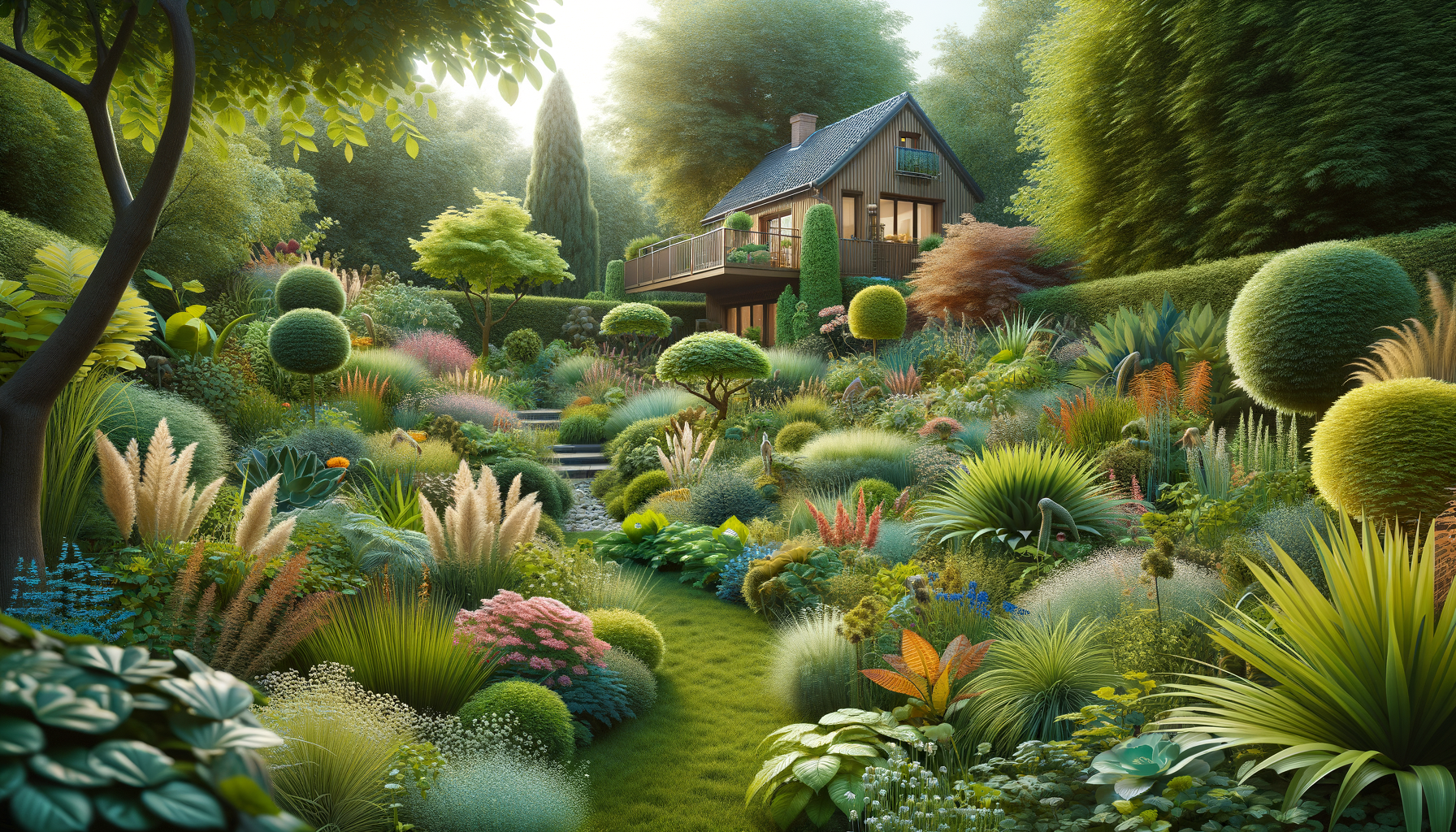
Why I Reimagined My Backyard with Local and Native Plants
Understanding Native Plants for Landscaping
Native plants are those that have evolved naturally in a specific region over thousands of years. They form an intrinsic part of the local ecosystem, coexisting with native wildlife and climate conditions. Landscaping with native plants is not just a trend; it’s a sustainable choice that offers numerous benefits. These plants are adapted to the local soil, rainfall, and temperatures, making them resilient and less dependent on human intervention.
When choosing native plants for your garden, consider the specific environment of your area. For instance, if you live in a region with dry summers, opt for drought-tolerant species like certain types of sagebrush or yucca. Conversely, if your area is known for heavy rainfall, plants such as ferns or swamp milkweed might thrive. By selecting plants that are naturally suited to your local conditions, you reduce the need for additional watering, fertilizers, and pesticides.
Furthermore, native plants support local biodiversity. They provide food and habitat for native birds, insects, and other wildlife. This not only enhances the ecological health of your garden but also contributes to the broader environmental well-being. In summary, integrating native plants into your landscaping can create a beautiful, sustainable, and wildlife-friendly environment.
Exploring the Benefits of Native Plants
Native plants offer a myriad of benefits that go beyond aesthetics. One of the primary advantages is their low maintenance nature. Because they are adapted to the local climate, they require less water, reducing the need for irrigation systems and conserving valuable water resources. This is particularly beneficial in areas prone to drought.
Additionally, native plants are more resistant to local pests and diseases. This reduces the need for chemical pesticides, which can harm the environment and disrupt the ecosystem. By minimizing chemical use, you create a safer environment for beneficial insects like bees and butterflies, which are crucial for pollination.
Another significant benefit is the support native plants provide to local wildlife. They offer essential resources such as nectar, seeds, and shelter, promoting biodiversity in your backyard. This ecological harmony attracts birds, butterflies, and other wildlife, turning your garden into a lively ecosystem.
Lastly, native plants can help combat climate change. By choosing plants that require less maintenance and resources, you reduce your carbon footprint. Moreover, native plants can improve soil health through their deep root systems, which help prevent erosion and increase soil fertility. In essence, native plants are an investment in a healthier, more sustainable future.
Innovative Low Maintenance Backyard Ideas
Transforming your backyard into a low maintenance oasis is achievable with careful planning and creativity. Start by assessing your space and identifying areas that require high upkeep. Consider replacing traditional lawns with native ground covers or ornamental grasses, which require less mowing and watering.
Incorporate hardscaping elements like stone paths, gravel beds, or wooden decks to reduce the area that needs regular care. These features not only add visual interest but also minimize the need for constant maintenance. Choose materials that complement the natural landscape and enhance the overall aesthetic of your garden.
Another idea is to create a rain garden. This involves designing a shallow depression in your yard that collects and absorbs rainwater. Plant it with native wetland species that thrive in moist conditions. This not only reduces runoff but also provides a habitat for wildlife and adds a unique feature to your backyard.
Lastly, consider installing a drip irrigation system. This efficient watering method delivers water directly to the plant roots, minimizing evaporation and ensuring that your plants receive the right amount of moisture. With these ideas, you can create a beautiful, low maintenance backyard that aligns with your lifestyle and environmental values.
Designing a Native Plant Garden: Practical Tips
Designing a native plant garden requires thoughtful planning and consideration of various factors. Begin by researching the native plants that are suitable for your area. Visit local botanical gardens or consult with native plant societies to gain insights into the species that thrive in your region.
Plan your garden layout by considering the mature size of the plants. This prevents overcrowding and ensures that each plant has enough space to grow. Group plants with similar water and light requirements together to create microclimates that mimic their natural habitats.
Consider the seasonal changes in your garden. Choose a mix of plants that offer year-round interest with varying bloom times, foliage colors, and textures. This not only enhances the visual appeal of your garden but also provides continuous resources for local wildlife.
Incorporate elements like mulch and compost to improve soil health and retain moisture. Mulching around your plants reduces weed growth and maintains soil temperature, while composting enriches the soil with nutrients. By following these practical tips, you can design a native plant garden that is both beautiful and sustainable.
Conclusion: Embracing Native Plants for a Sustainable Future
Embracing native plants in your landscaping is a step towards creating a sustainable and environmentally friendly backyard. By choosing plants that are adapted to your local climate, you reduce the need for excessive water and chemical use, contributing to the conservation of natural resources.
Native plants not only enhance the beauty of your garden but also support local wildlife, promoting biodiversity and ecological balance. They offer a low maintenance solution that aligns with modern environmental values, making them an ideal choice for homeowners seeking to reduce their environmental impact.
As we look towards the future, integrating native plants into our landscapes is a practical and impactful way to support our planet. Whether you’re starting small with a few native flowers or transforming your entire backyard, every effort counts towards building a more sustainable world.